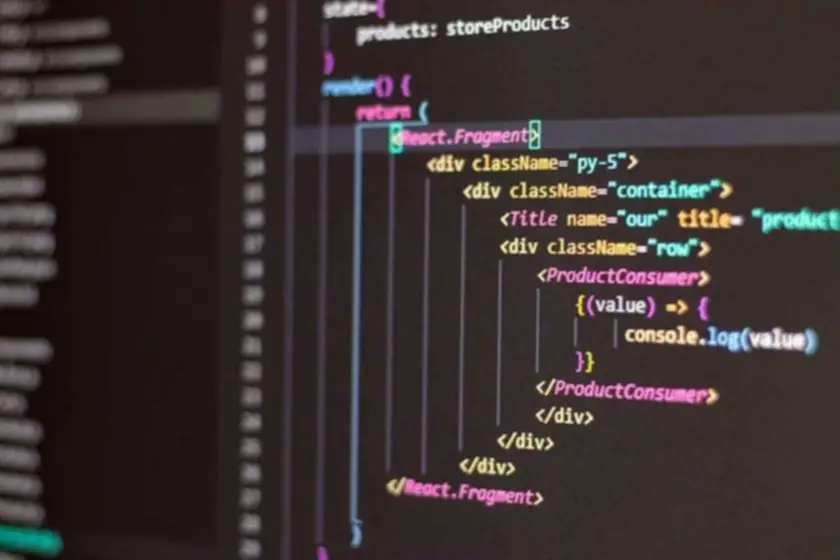A complete framework overlaying the complete system improvement course of. You begin by planning what sort of cake you need, gathering the ingredients, mixing them collectively, baking the cake, making sure it tastes good, and eventually, sharing it with others. Similarly, the SDLC helps professionals in system improvement follow a clear plan from the beginning of the idea of a system to its ongoing maintenance. It’s suitable for tasks with tight deadlines and versatile necessities. Lean growth aims to optimize effectivity in the growth course of.
Effective planning ensures that the event course of aligns with the organization’s goals, guiding the project in a clear and structured path. The software improvement lifecycle (SDLC) outlines several tasks required to build a software utility. The growth process goes by way of several stages as developers add new options and repair bugs within the software. DevOps engineers are IT professionals who work side-by-side with builders and different IT personnel to take care of and information code releases and deployments. This unique role incessantly strikes a quantity of instances throughout SDLC phases, formulating requirements for the system alongside the way for the subsequent development cycle, and upholding SDLC standards.
- Testing isn’t just about fixing problems—it’s about making certain the product delivers on its promise to customers.
- The SDLC doesn’t necessarily stop once the system is out dwelling and breathing.
- The iterative lifecycle model starts with the implementation of a small set of new software necessities, and iteratively improves the evolving versions until the new system is fully applied.
- Our expertise spans all system improvement life cycle phases, guaranteeing project success from start to finish.
Stage Four: Improvement Stage
The actual variety of system development life cycle phases varies from 5 to seven, relying on the specifics of a system improvement project and a selected methodology that a staff applies. We’ll describe the seven-stage version of a system improvement life cycle since it’ll let you see the bigger picture. Time and again, it’s been proven that projects not solely profit but thrive by following a standardized set of steps to achieve a ultimate result.

Upkeep
This model prioritizes collaboration and communication among project group members, which permits them to stay aligned regarding project expectations and necessities. It additionally allows teams to suppose about and implement adjustments primarily based on common suggestions with out critically impacting the project’s schedule, scope or price range. In addition, this mannequin accounts for shifting project requirements, which could not at all times be apparent at the start of the SDLC however emerge as it progresses. Each firm may have their very own defined best practices for the various phases of improvement. For instance, testing might contain a defined number of finish users and use case eventualities to be able to be deemed profitable, and upkeep might embrace quarterly, mandatory system upgrades. At Intellectsoft, we all know how important an efficient project administration strategy is.
Tracking the best KPIs can provide insights into your product’s efficiency. Metrics like time-to-market, CSAT score, and defect rates may help you determine areas for enchancment. Clear, organized documentation is critical for guaranteeing continuity and decreasing miscommunication. Maintain up-to-date requirements, roadmaps, and testing logs to maintain everybody on the identical https://www.globalcloudteam.com/ page.
SDLC fashions were launched to observe a disciplined and systematic technique whereas designing software program. With the software program improvement life cycle, the method of software program design is divided into small parts, which makes the issue extra comprehensible and easier to unravel. SDLC comprises a detailed description or step-by-step plan for designing, creating, testing, and maintaining the software program. The methods improvement life cycle originally system development life cycle methodology consisted of five stages instead of seven. These included planning, creating, creating, testing, and deploying.
This phase contains multiple kinds of testing, similar to unit testing, integration testing, system testing, and user acceptance testing. The objective is to determine and fix any issues earlier than the system is deployed. In the Analysis phase, the main focus is on understanding and documenting the system’s necessities. This includes gathering input from stakeholders, reviewing current processes, and identifying the system’s wants. The data collected varieties the idea for growing a system that addresses each user expectations and organizational challenges.
Software growth demands a structured approach for optimal outcomes. The System Development Life Cycle (SDLC) offers this framework, guiding groups through each project section. The project supervisor is the general management agent for a strong SDLC course of. Similarly, automated and cloud-based platforms, which simulate testing environments, take a big amount of guide time out of this stage of the system growth life cycle. Selenium, a browser testing tool, is one popular example of such a platform.
The SDLC supplies project managers with the instruments to determine and mitigate such roadblocks and reduce complexity as the project progresses. Every hardware or software program system goes through an iterative growth course of with multiple steps, with every section encompassing a sure set of activities and tasks. Following the Waterfall methodology, a project improvement staff wants to complete every part step by step. Each successive phase of the SDLC process depends on the data gained from the previous one. The Spiral methodology is taken into account one of the most versatile SDLC fashions. Typically adopted for full-blown initiatives, the Spiral mannequin lets improvement teams construct a extremely customized product.
However, it’s vulnerable to early delays and might lead to massive problems arising for growth groups later down the road. This is where Static Application Security Testing or SAST instruments come into play. Product program code is constructed per the design document specs.
The Agile methodology can work in harmony with the SDLC course of by pairing phases with iteration frameworks.As a result, every stage may have roles of project individuals who will take an active role in their tasks. In this text, we will give consideration to the primary project roles which include the project manager, analyst, architect, developer, tester, and DevOps. It’s value noting that each project participant performs an necessary role throughout the SDLC and so they all have a direct influence on the general wellbeing of initiatives.
Waterfall Mannequin

In this part, all the documentation that the staff created in the evaluation phase is used to develop the precise technical documentation of the project. It’s quite common for the project groups to use UML diagrams in the design phase to design the system’s structure. The key aims of SDLC embody delivering a high-quality product, assembly buyer requirements, managing project sources effectively, minimizing risks, and providing a transparent and transparent growth process. The SDLC entails planning the project, gathering requirements, designing the system, coding the software program, testing it for points, deploying it to users, and sustaining it post-release. Each section ensures the software meets user wants and capabilities correctly, from begin to finish.
Besides, if a group follows a system improvement life cycle SDLC, it’s mentally more oriented on outcomes. It implies that there might be much less wasted effort, so a consumer can count on better ROI. The appropriate use of the System Development Life Cycle has a lot of benefits. The implementation of a lifecycle for a system opens up a lot of possibilities, together with the flexibility to plan and organise structured phases and sensible goals beforehand.
In concept, all the prior planning and outlining should make the precise Large Language Model growth phase relatively simple. Before we even begin with the starting stage, the best tip we can provide you is to take time and purchase a correct understanding of the app improvement life cycle. The iterative nature of the System Design Life Cycle (SDLC) means the method is not strictly linear; instead, it includes revisiting and refining stages primarily based on suggestions and evolving necessities. This ensures the system remains adaptable and aligned with its aims. Broad focus on the general development process, addressing planning, implementation, testing, and maintenance.
